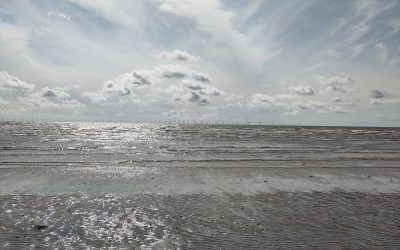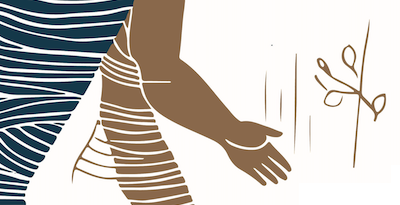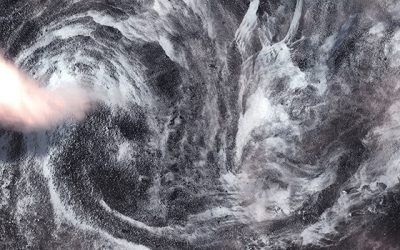My residency exploring the Duddon is part funded by the Centre for Mobilities Research at Lancaster University, and as part of my visiting fellowship with them I instigated a walk around an area of the Dunnerdale Fells.
Below are a selection of photos from the walk, more are over in this album on Flickr.
It wasn’t a guided tour as such, more an opportunity for people from various backgrounds to gather and to use the act of walking to observe and comment differently on the landscape.
A great mix of people came along, including artists, mobilities researchers, students and someone from the management school. (This is one of the things I like about Mobilities Studies – that it can bring in people from lots of different disciplines.)
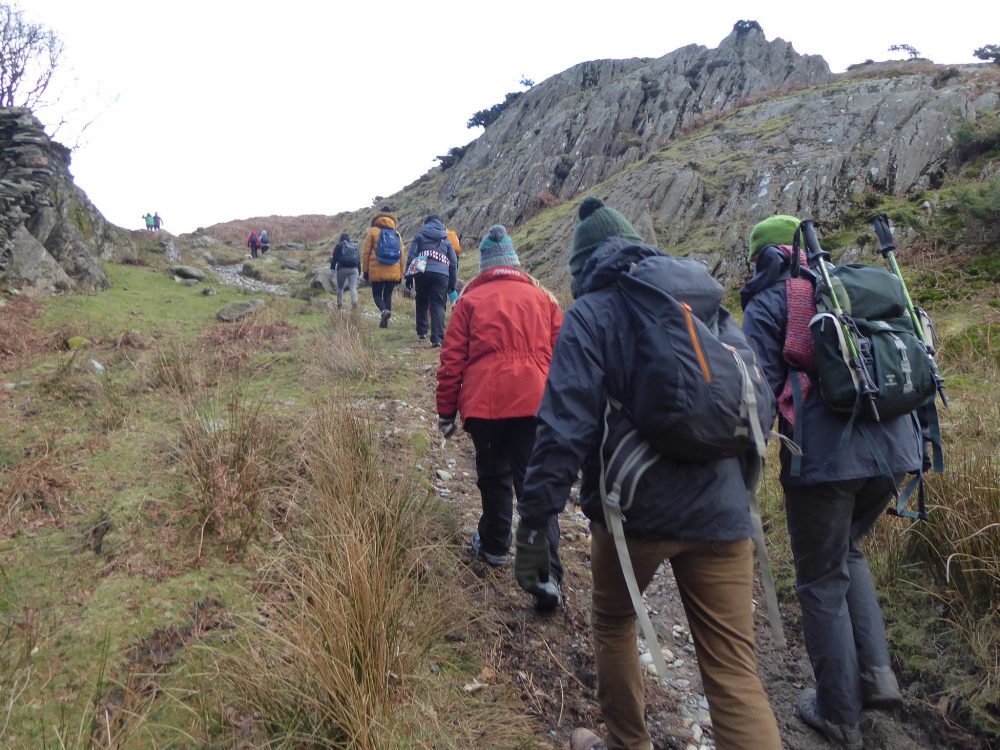
Our initial introductions were hampered slightly by the fairly substantial climb right at the beginning, but we gradually got to know each other over the course of the following 4 miles or so.
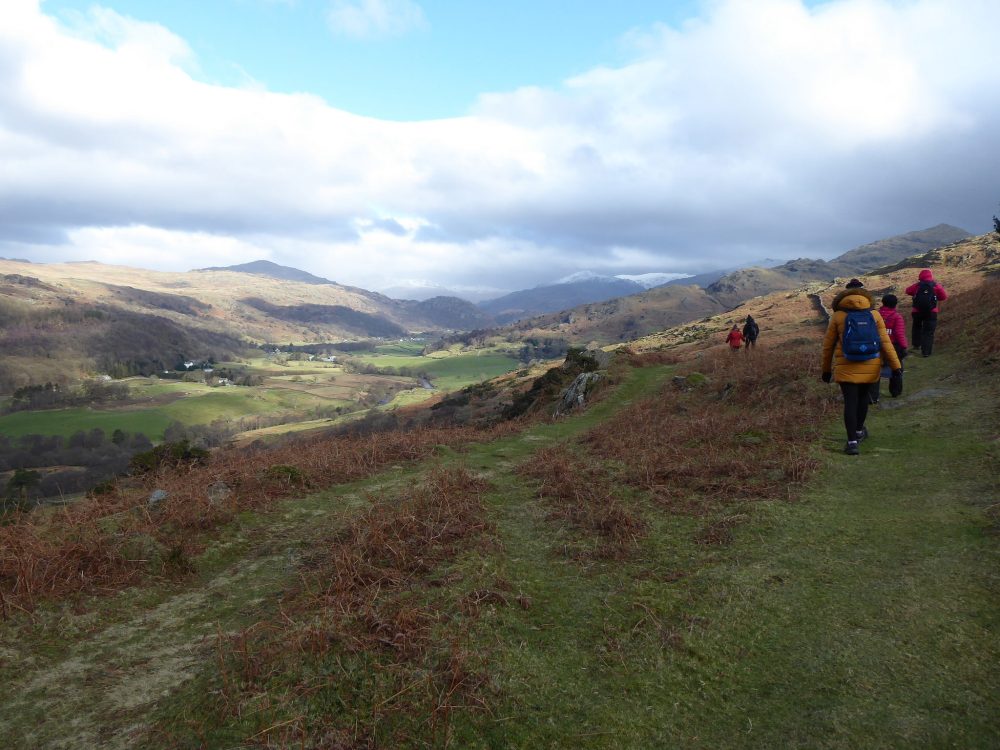
The weather was cycling through a selection of different settings, although thankfully rain and fog weren’t on the menu and our hard work was rewarded with some stunning views and dramatic changes in light.
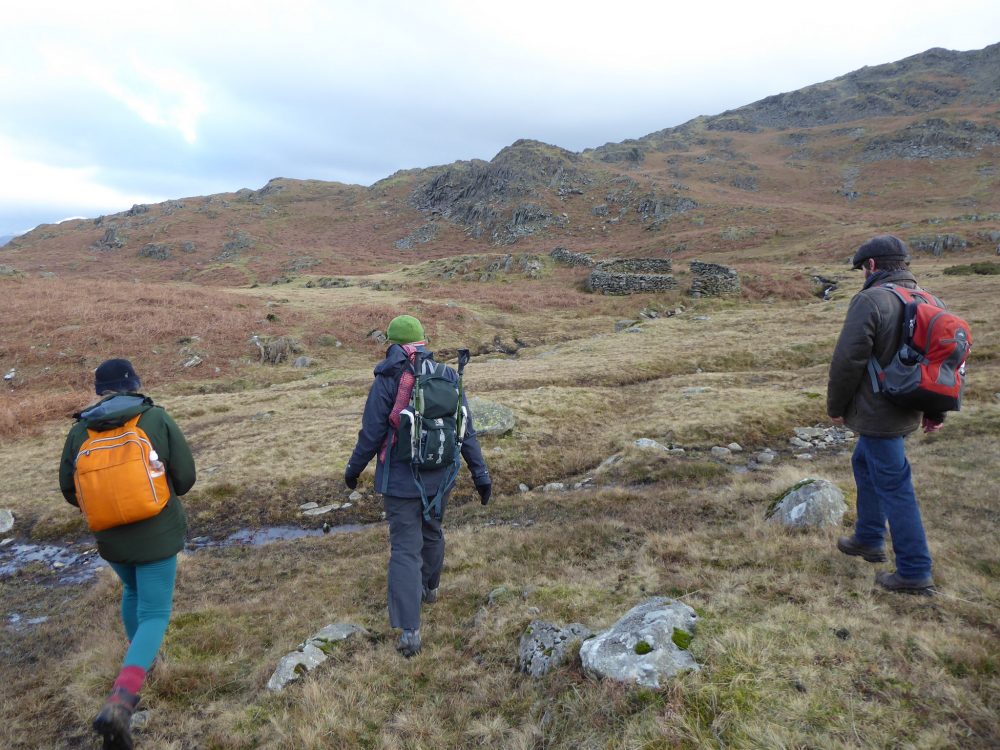
The immediate terrain also gave us plenty to think about as we negotiated a selection of bridleways and footpaths, sometimes requiring us to cross becks and other boggy bits.
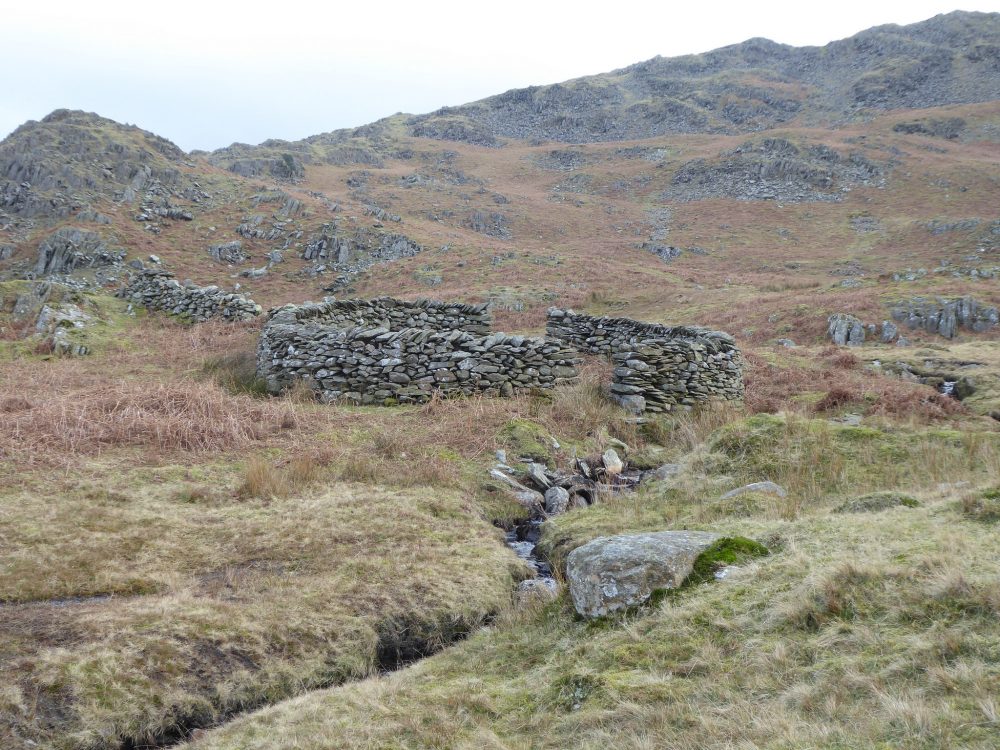
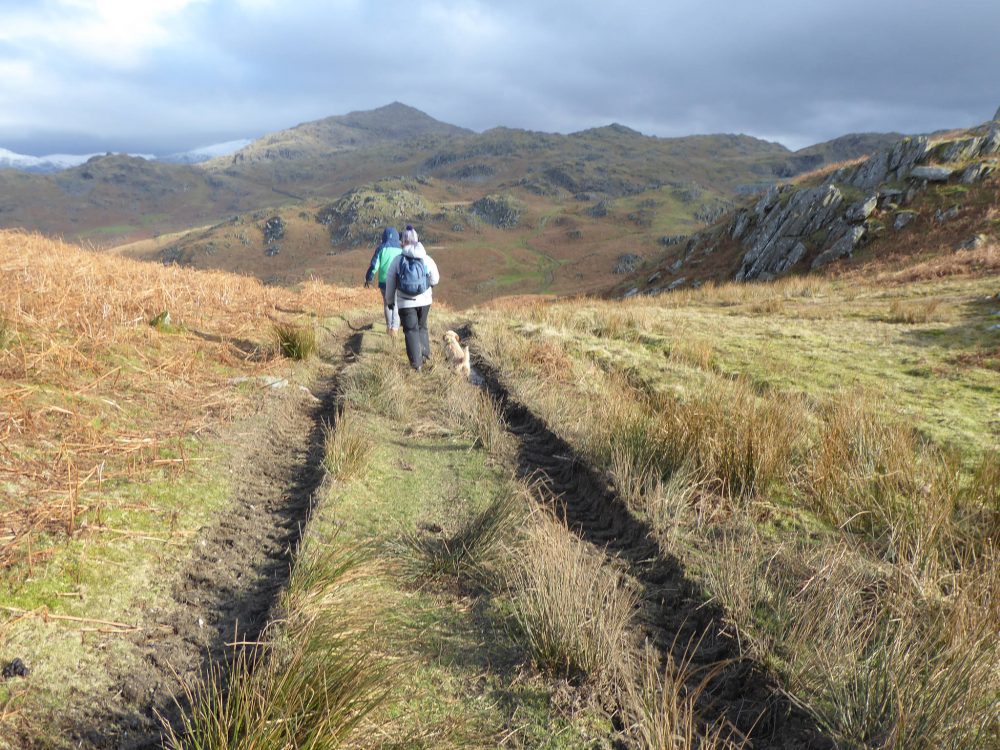
The stone sheep fold (and nearby contemporary galvanised metal sheep feeder) were a bit of a jarring human presence up on the fells, just as we were starting to relax into the isolation.
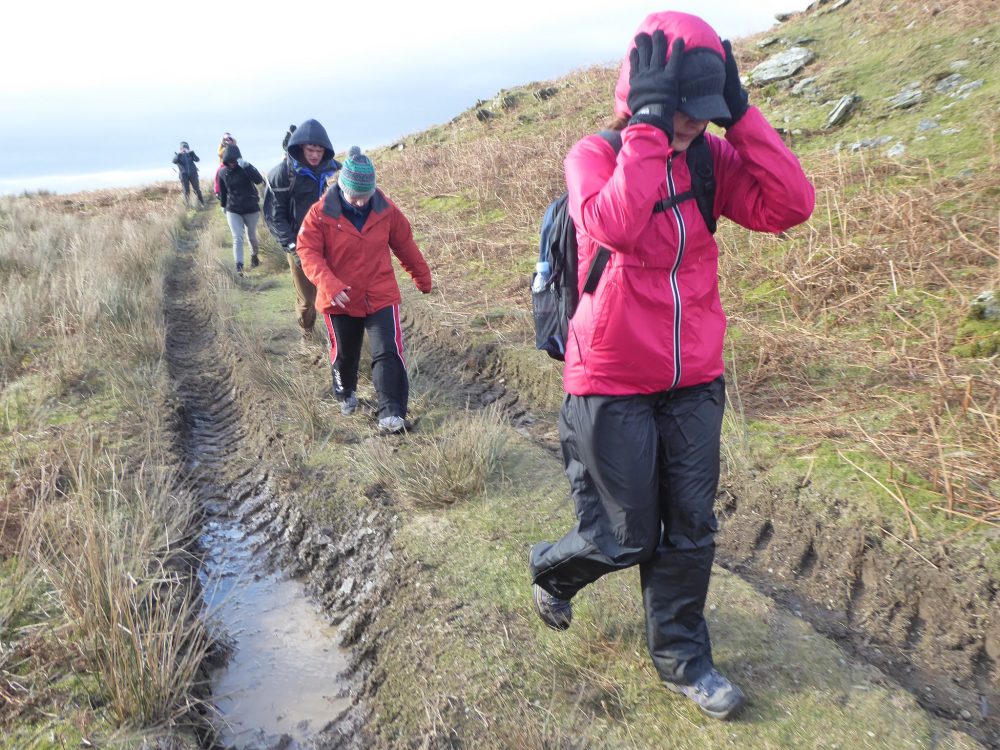
We followed deep tyre tracks for a short while, but our attention here was more focused on the incredibly strong winds as we went over a particularly exposed ridge.

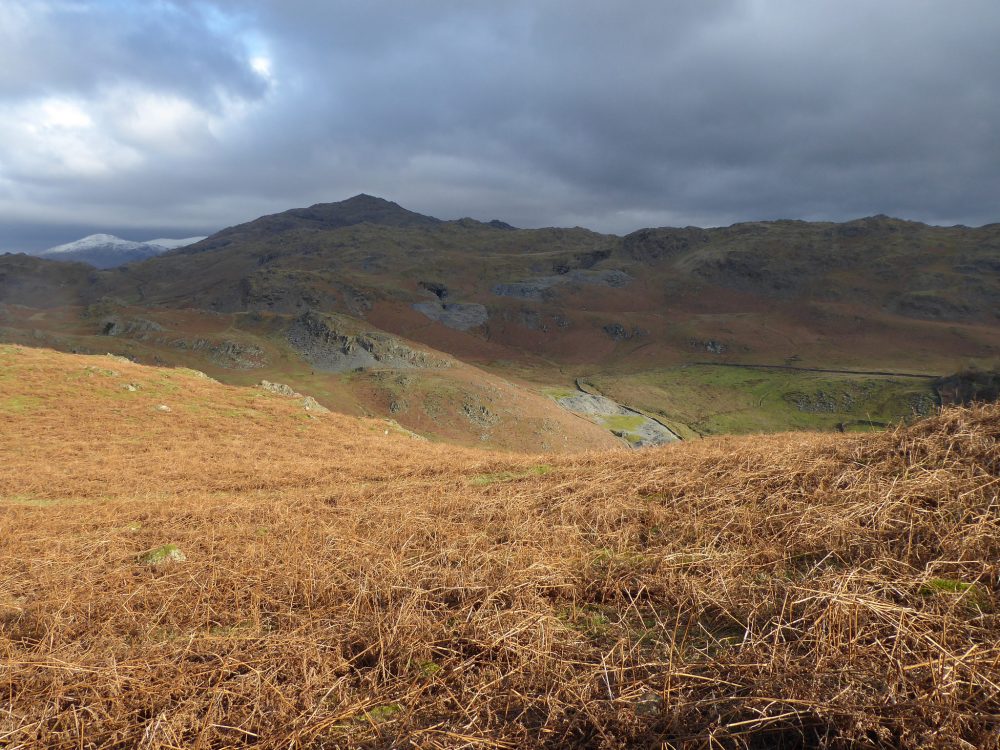
Oh, but the views though!
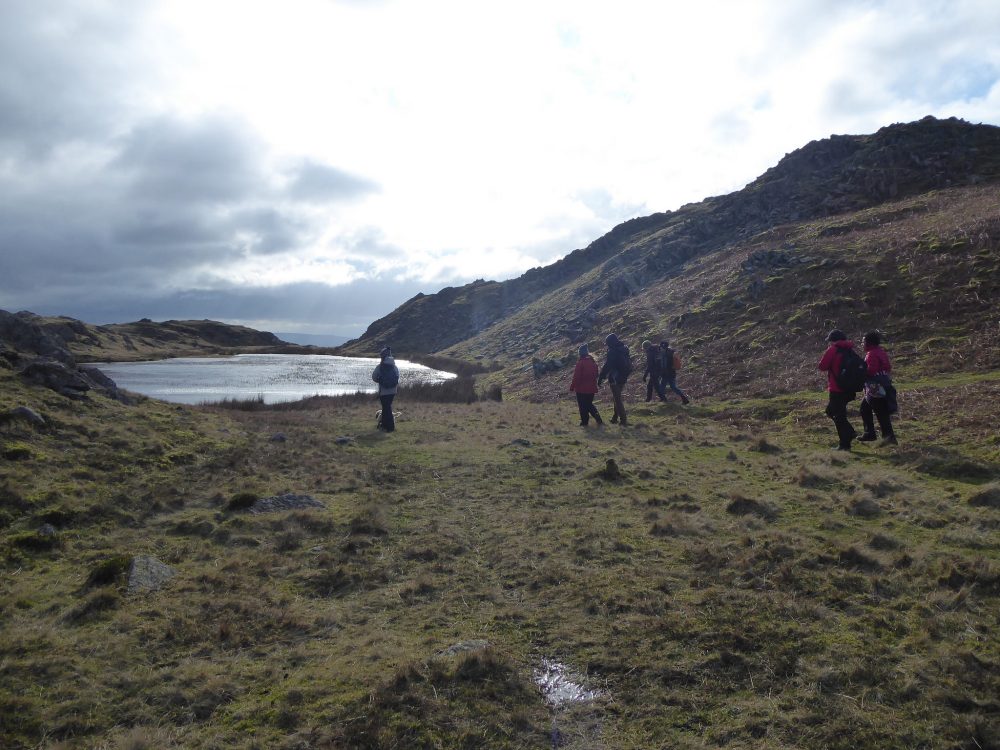
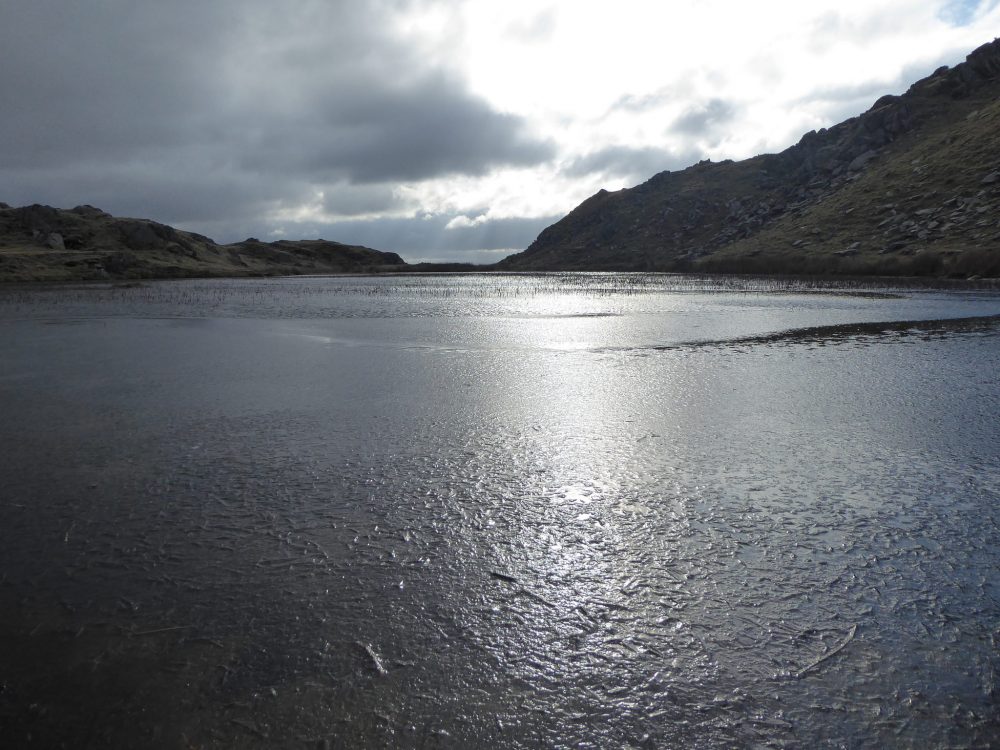
Stickle Tarn elicited a few exclamations along the lines of “Wow! Brilliant!” as we rounded a corner.
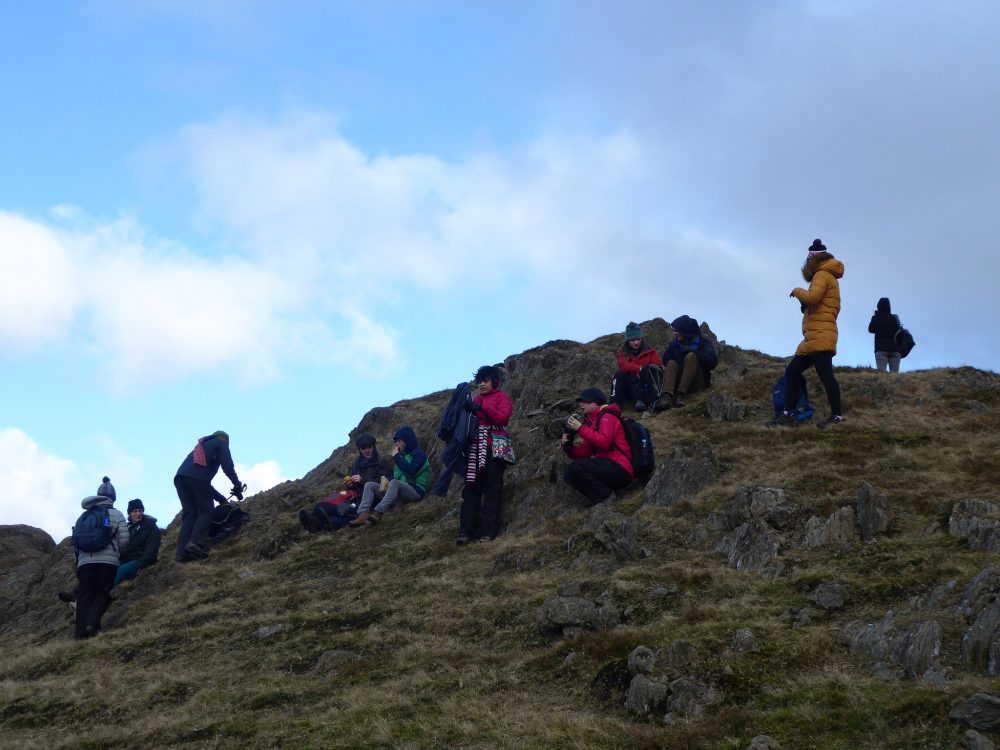
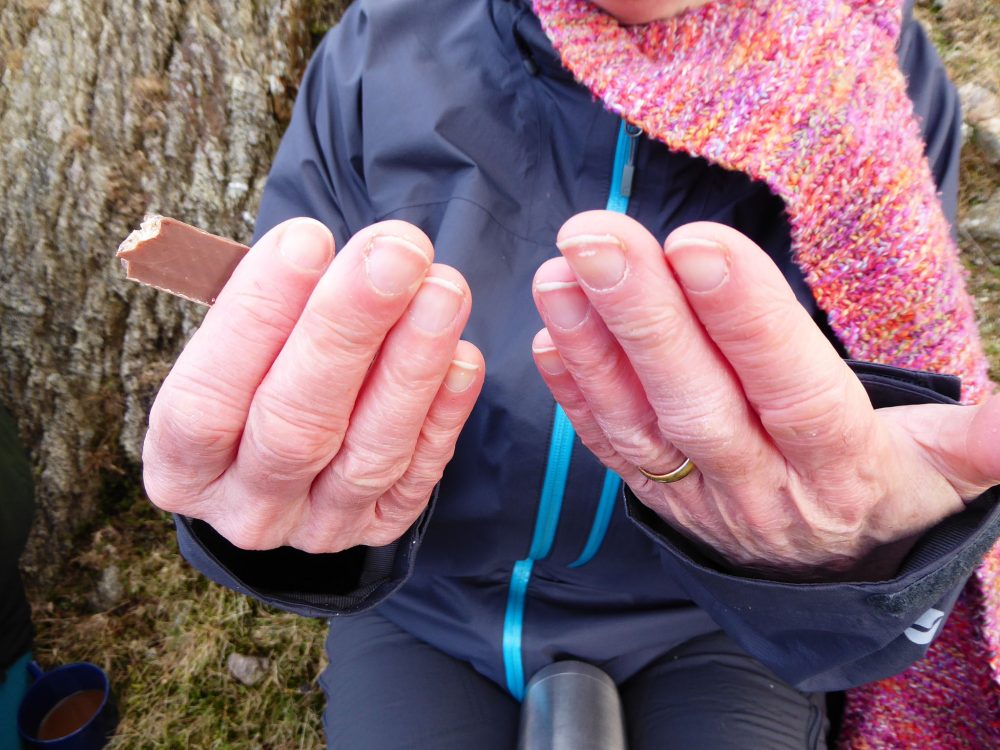
We decided up here was probably going to be the most sheltered spot we were going to find and so we settled down (briefly) for our lunch. We didn’t linger for long though, as it was bitingly cold and we were starting to feel the need to be moving again.
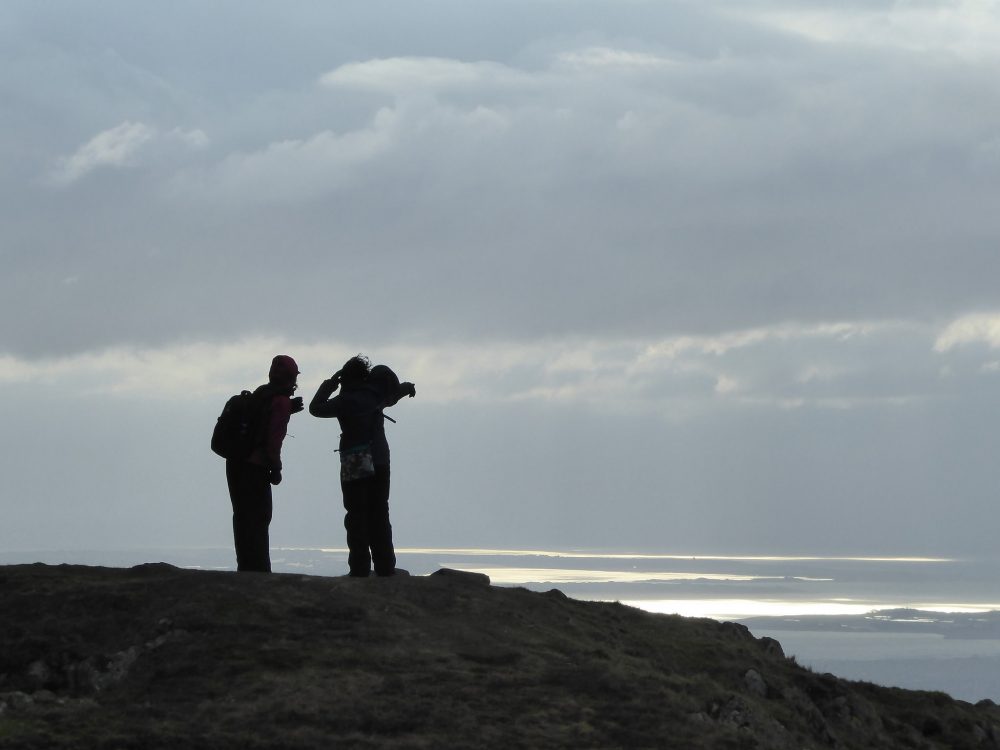
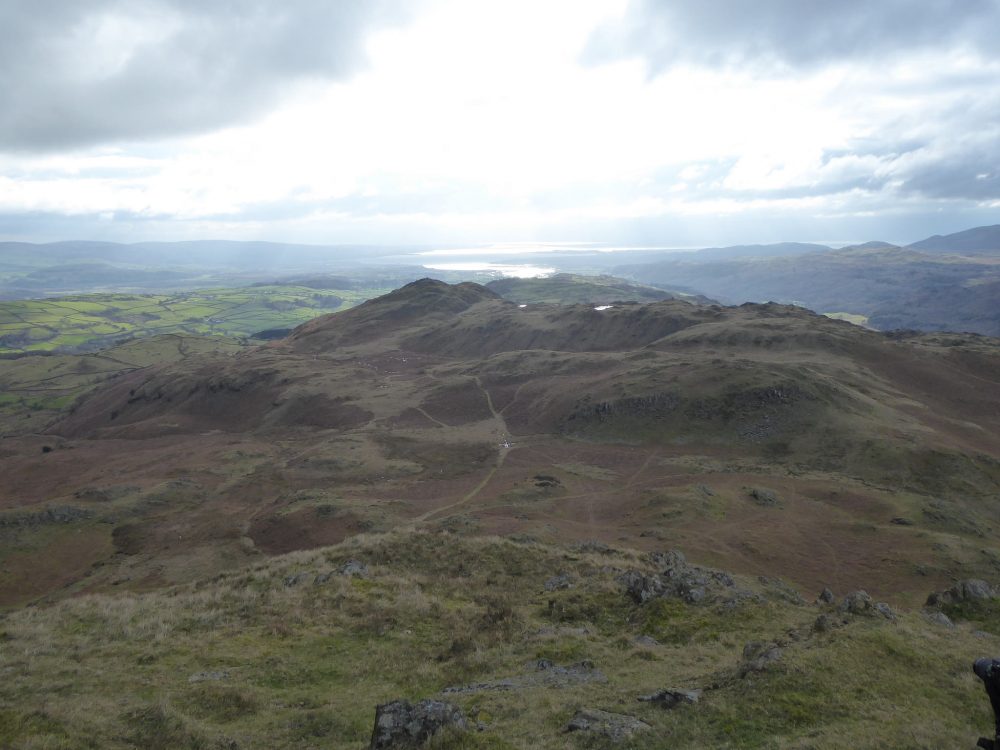
Our opportunity to warm up came with the very steep scramble up to the top of Stickle Pike (seen from the other side in the photo below). The payback came in the form of views right out to Duddon Sands and the estuary.
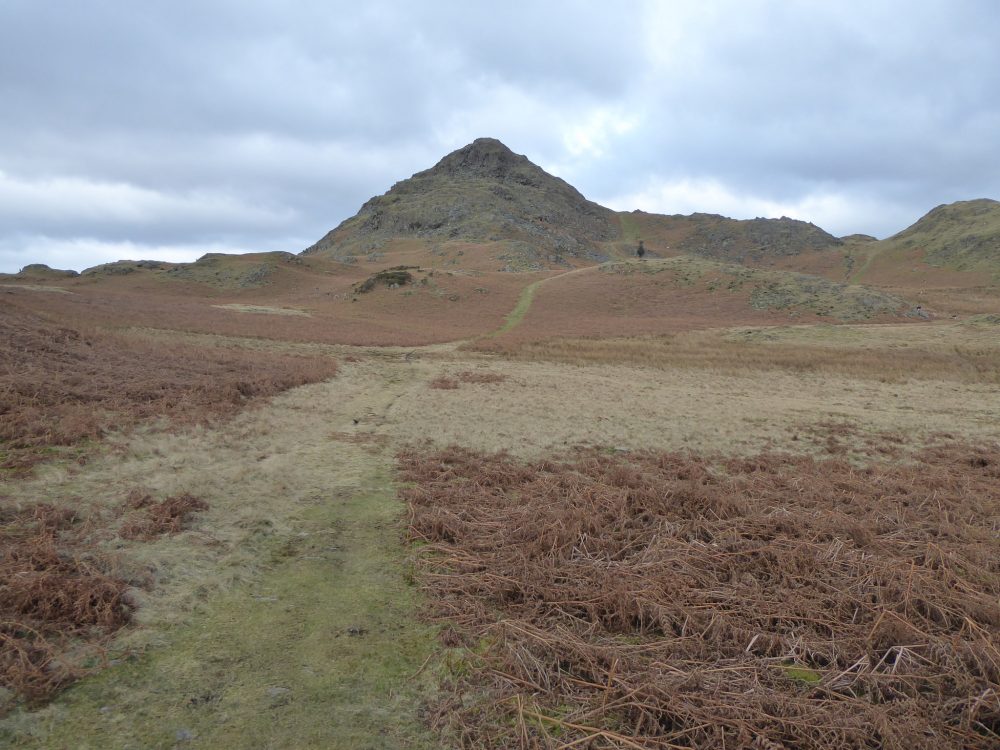
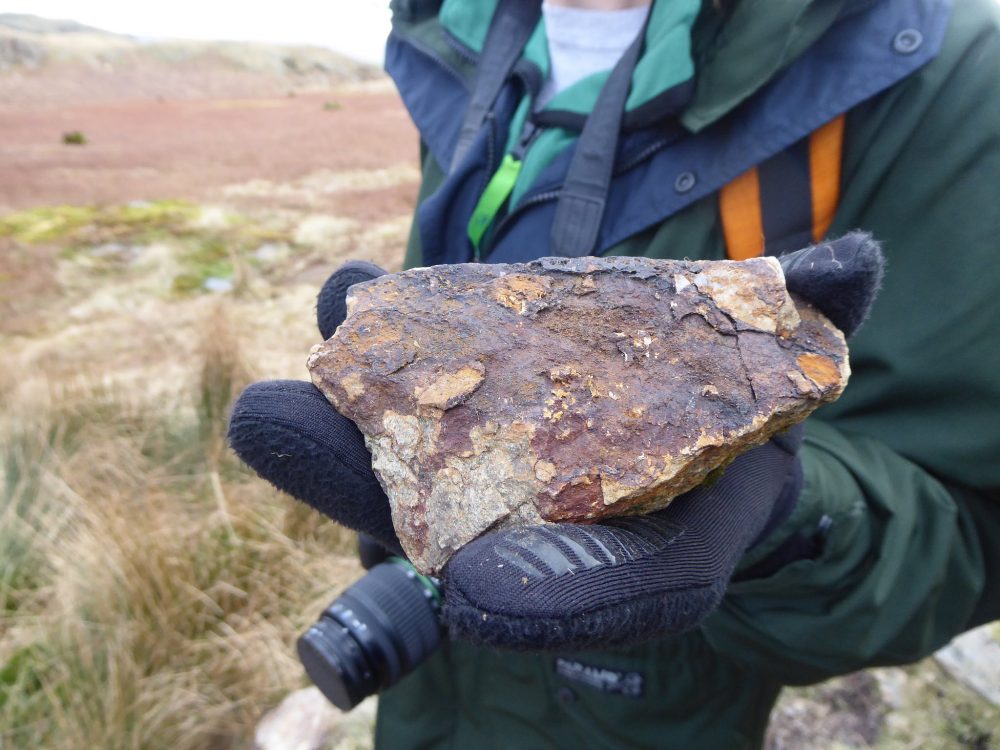
Circling back around in the direction of Great Stickle, Tess (previously a Geology student, but now working towards a PhD in Art) taught us about how quartz tends to be found alongside other ores.
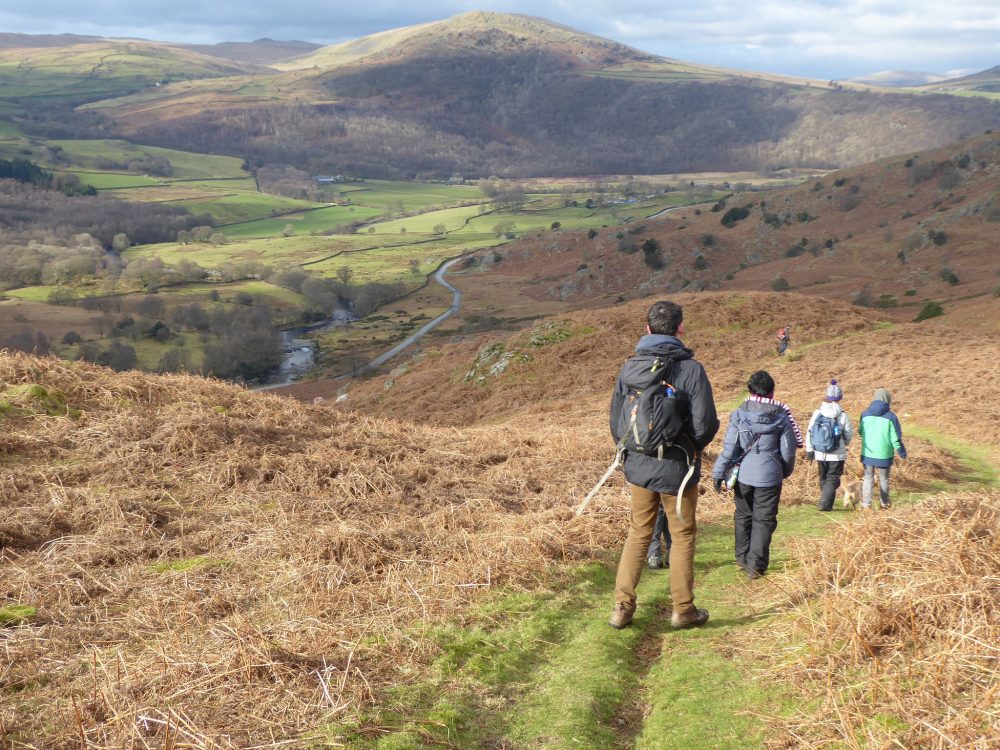
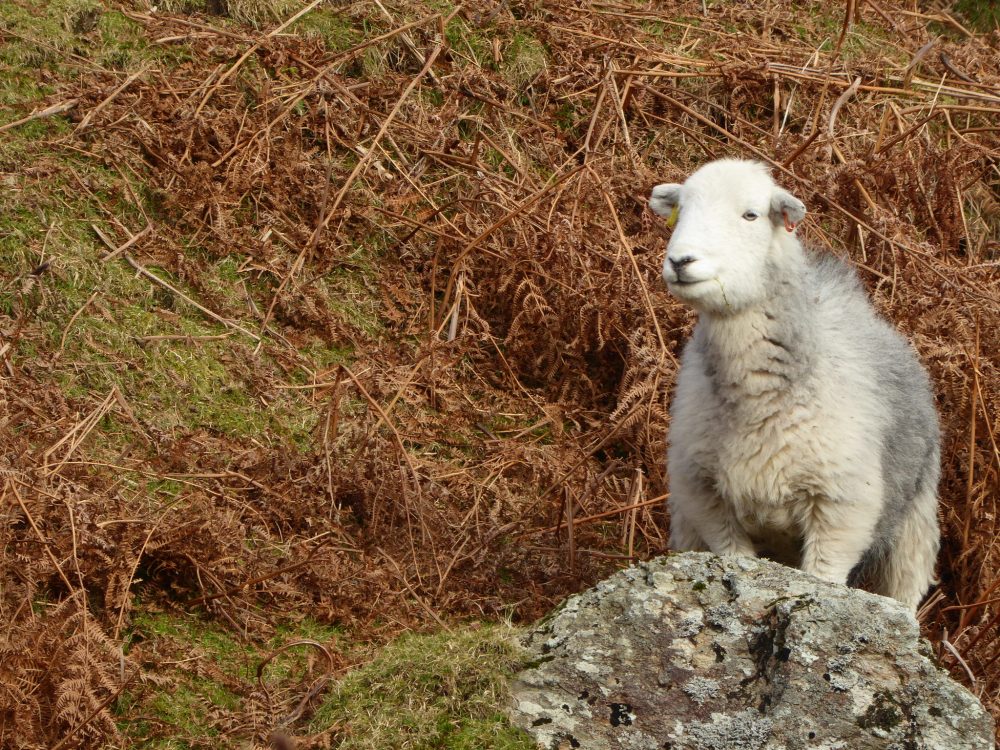
By the time we started to drop back down towards the floor of the valley, I’d also had conversations with people about guidebooks, how things get edited out of the record, Lord of the Rings, avatars and temperature, alternative formats for submitting work for assessment, and being the world expert on your practice.
Sadly I missed out on the conversation about the tapir.
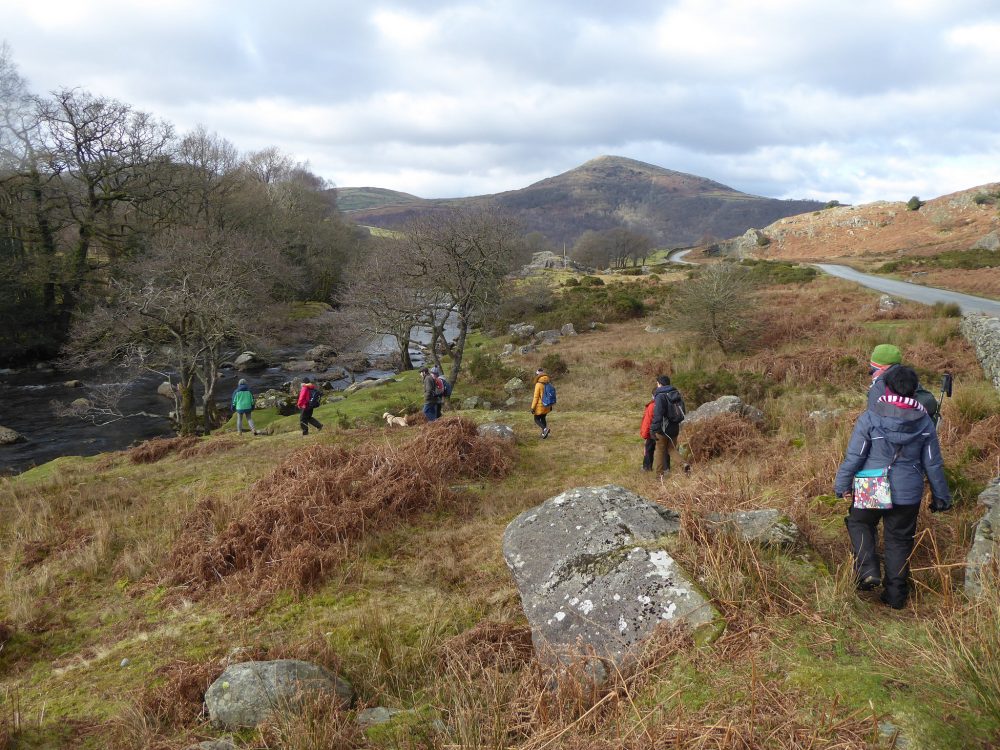
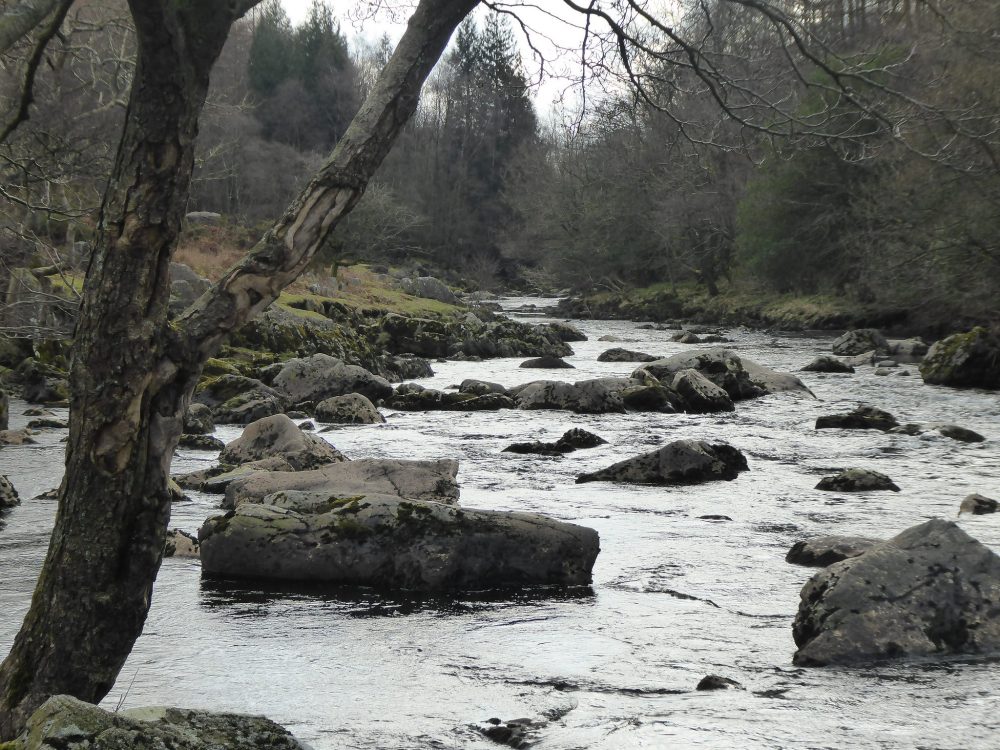
The last section of our walk followed the course of the Duddon back upstream, and there were appreciative noises all round at the change in surroundings. Pretty much we could all understand why the Duddon has a special influence on people.
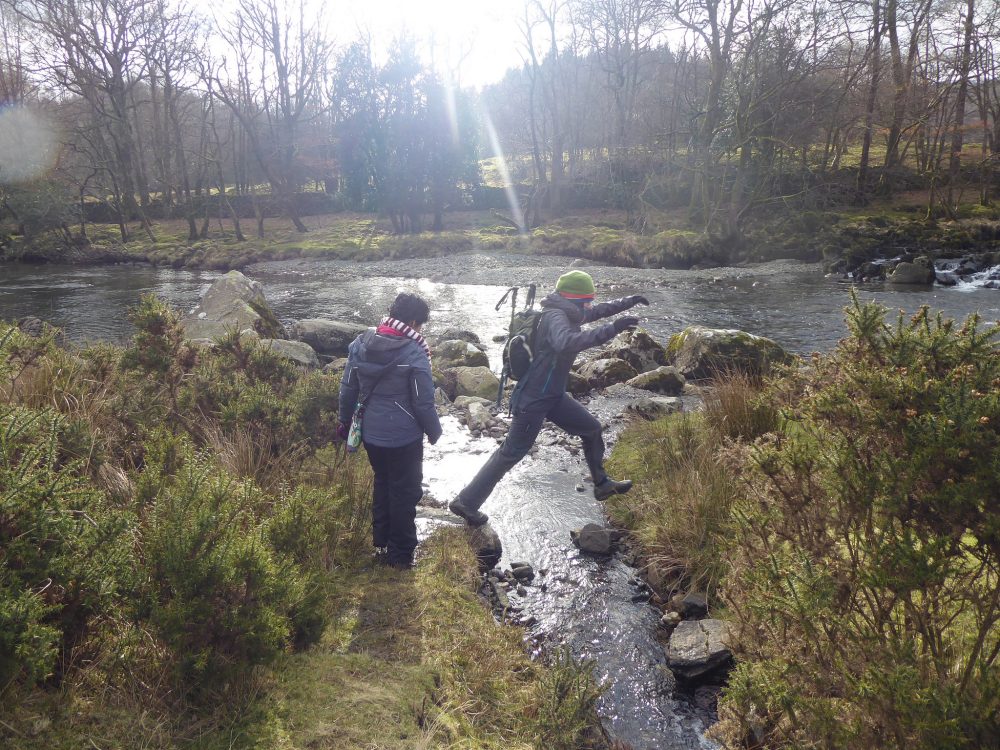
By this time I was nurturing a bit of a fascination for that moment when people leap across small streams, and managed to snap a few photos of jumpers in action.
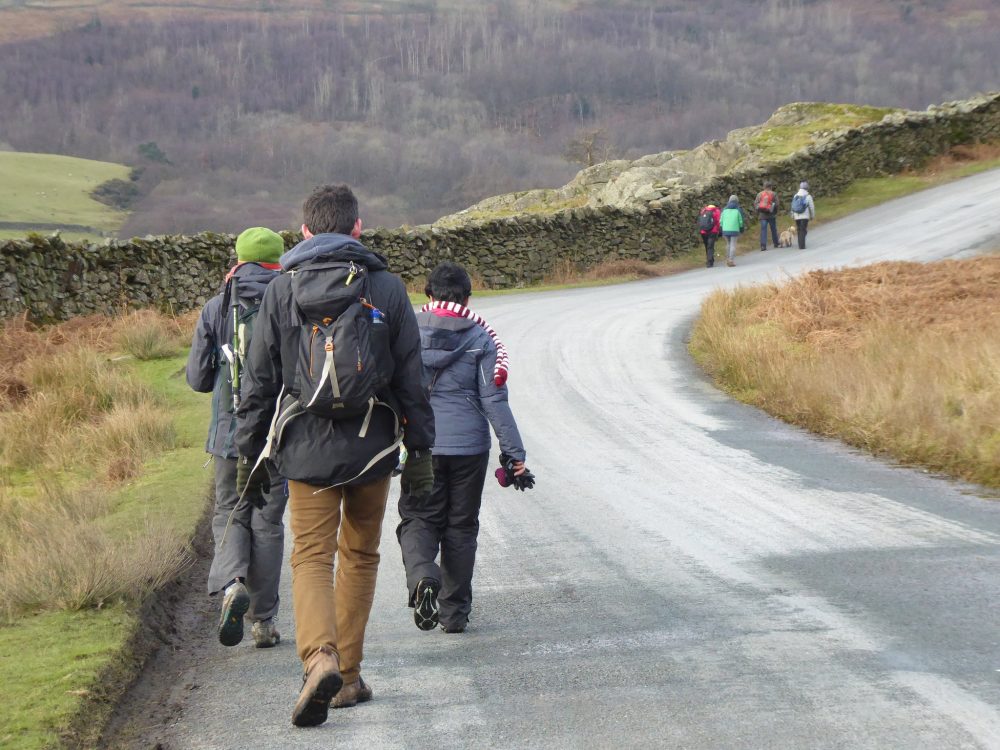
Shortly afterwards we had all made it back – dry – to the cars and then we relocated to the pub for a debrief chat about the things that we had noticed about the area and also about the effects of walking and talking at the same time as opposed to trying to cover the same ground whilst sat in a room somewhere.
This text has also been published on the By Duddon’s Side project blog at this link.

